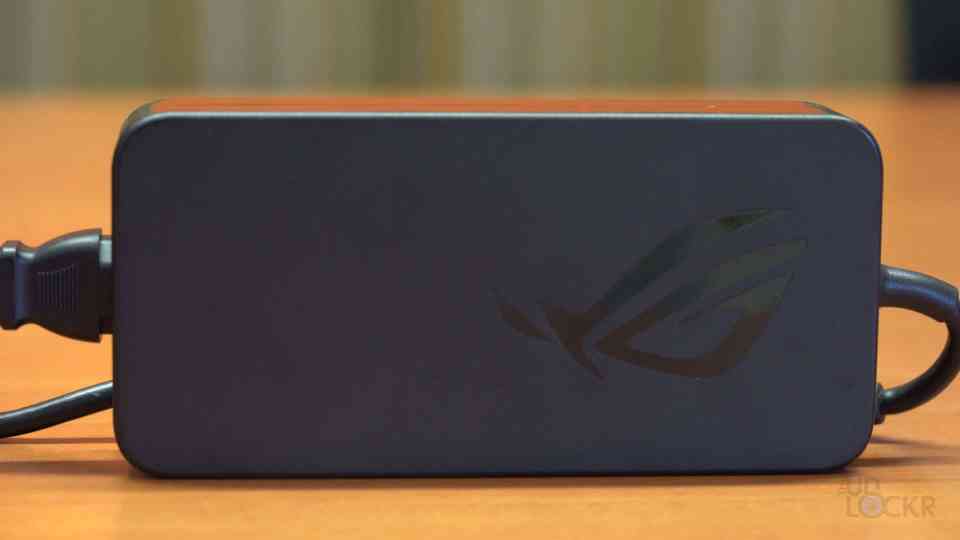ASUS ROG Mothership Complete Walkthrough: A Surface Pro on Steroids
What looks sort of like the Surface Pro but has the top of the line specs, ports, latest GPU from NVIDIA’s RTX line, and RGB for days? Yeah, this is the new Asus ROG Mothership gaming laptop and I managed to get a little time with it right after CES and figured I’d do a complete walkthrough on it as best I could with the limited time I had with this limited device. If you aren’t familiar, a complete walkthrough on this channel is where I go through every feature I can on a new device so you are better prepared should you be in the market to go buy one, or in this case since I can only imagine it’ll be in limited quantity and be quite expensive once released, just curious about all it can do.
Mothership Styling
With that said, let’s get started with the very unique styling.
So this isn’t a normal gaming laptop: clearly. Firstly, it’s about 10.3 lbs and about 1.2 inches thick. But, when we get into what’s inside, that’s actually pretty impressive, but we’ll get to that in a bit.
On the bottom of the CNC aluminum machine chassis that I was told takes 20 hours to carve, we have two buttons on the bottom that when you rest the computer on them and push down, it springs out the back kickstand. Now, on this pre-production model, it seems to have 3 different stances but I’m told the final unit will be more adjustable. Once that’s laid out we can unfold the front to reveal the 17″ 1080P 144hz 3ms response time IPS display that apparently is 100% sRGB color accurate and our mostly CNC machined aluminum keyboard.
That keyboard is an RGB per key chiclet-style keyboard that can be adjusted using ASUS’s built-in Aura program with 2.5mm of travel distance and a neat party trick. I can be used connected like this or you can disconnect it and fold the top half back to use it wirelessly (which also reveals a USB-C port at the top of the keyboard for you to plug in via USB-C to the computer if you want instead of using the 2.4Ghz WiFi connection that it uses otherwise). Now, this paired with the adjustable kickstand actually makes for a pretty customizable set up in terms of the position in which you use it.
Check out my complete walkthrough video on the ASUS Zenfoe 5 and 5Z.
Asus has also added their sort of becoming de facto trackpad/number pad combo that can be switched between either with the tap of a button.
When you do remove the keyboard, you get a better look at the four front-facing speakers that utilize a Sabre DAC and smart amps to do hi-res 24-bit 192kbps audio. We also have our front grill that is, obviously, Aura-enabled. And yes, before you ask, it can be synced with the keyboard along with customizing it a ton of other ways (and altering the performance of the machine too for that matter) in the Armory Crate program that ASUS preinstalls.
We also have array microphones built-in that will supposedly remove background noise for you when you’re say talking smack while playing a game and along those lines, we have a 1080P 30fps capable webcam above the screen to stream with that can also be used with Windows Hello to log in to the computer.
For ports, we have a lot of ports.
On the left, we have a USB 3.1, Gen 2 Type-C port that supports Thunderbolt 3, three USB 3.1, Gen 2 Type-A ports, a microphone, and a headphone jack, and an Ethernet port. But wait, there’s more.
On the right, we have an SD card slot, another USB 3.1, Gen 2 Type-C port that apparently comes directly from the GPU and supports VirtualLink for next-gen VR headsets, a USB 3.1, Gen 1 port that supports USB power plus, an HDMI 2.0 port, and not one, but two AC power ports for the 280W power adapters that it comes with.
Now it has two of these power ports, which reminds me of another crazy laptop that Acer made not too long ago that actually required two AC adapters to be plugged in at the same time for it to work at all. I was told that you can use two power adapters here but that it will run with just one if needed (although, I’m not quite sure what that means. Faster charging? Heavy load? Not sure).
ASUS ROG Mothership Specs
Now, the unique shape isn’t just an aesthetic choice. Apparently, ASUS designers have been toying with this type of shape for about 3 years. They apparently took one of their other desktop replacement laptops, propped it up and tested how much better it air-cooled itself vs using it in the typical laptop form-factor. Because of it no longer having such a small gap between the base (where all the components are) and the desk it was able to circulate air far more efficiently and that’s when Project Mothership was born.
Because all of the components in the ROG Mothership are behind the screen and the two fans are at the back where it’s quite open, they managed to not use any sort of liquid cooling and still squeeze in some crazy components.
First up, we have an Intel Core i9-8950HK CPU that usually runs at up to 4.3GHz when all six cores and 12 threads are in use, but they give it to you overclocked out of the box and able to hit 4.8GHz in turbo mode. Same goes for the GPU which is the latest NVIDIA RTX 2080 GPU that has 8GBs of GDDR6 memory and is famously know for it’s normal Cuda cores but also new RT cores for Ray Tracing and Tensor cores for AI computing which translate to more realistic gaming (left a link below that explains that pretty well if you’re curious).
Combined with these we have up to 64GBs of DDR4 2666mhz RAM, which I was told is actually user-upgradeable, as well and we have three m.2 NVMe PCIe 3.0 512GB drives with two of them directly attached to the CPU to bypass the DMI bottleneck that you normally have and enables speeds up to a peak of 8700MB/s.
Beyond that, we have Bluetooth 5.0 and Wifi 802.11ax (aka Wifi 6 which is the next gen of Wifi and you can’t use unless your router has it which isn’t terribly available just yet but good to have for the future and theoretically supports up to 2.6Ghz speeds).
For software, it’s running Windows 10 Home or Pro and comes with the usual Windows bundled software that you can uninstall by right-clicking any of it in the start menu if you want.
Now, since it was pre-production, I wasn’t able to do benchmarks, but here are some benchmarks on 3DMark using that GPU only to just give you some idea of what it’ll be capable of.
Pricing and availability were also not told to me, but be sure to check out my newly restarted tech blog and I’ll post pricing and other info there (subscribe to the newsletter for more stuff coming there if you’re interested).
Regardless, this feels a lot like the Acer Predator 21X that Acer made and sold a limited quantity of for about $9000. It wasn’t really about making a mainstream product, but more of a PR stunt to show what they were capable of and maybe give us a glimpse of what the future might bring to laptops as the components they used in there, and ASUS are using here come down in cost, size, etc.
I have a feeling this will be around that same price and also just as hard to get one (yeah, even though the Predator 21X was $9,000, they completely sold out), but it is exciting to see nonetheless to me because it shows just how far we’ve come in such a short amount of time and I can’t wait till they make some more portable laptops in this form factor to get more power out of those as well maybe.
And that’s it, let me know what you guys think of this thing in the comments below, like the video if you enjoyed it and subscribe to the channel and hit the bell next to the word subscribe to be notified when I do new videos. As always though, thanks for reading!



























